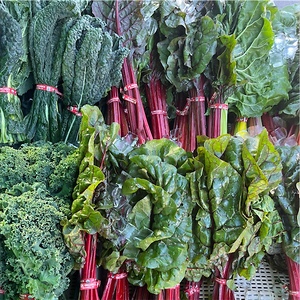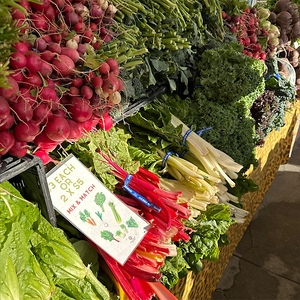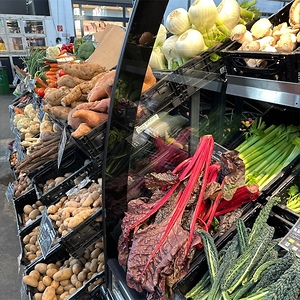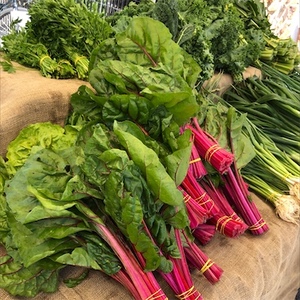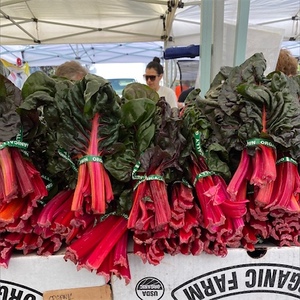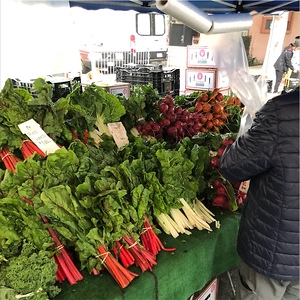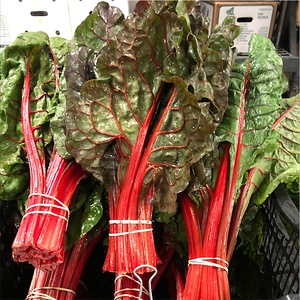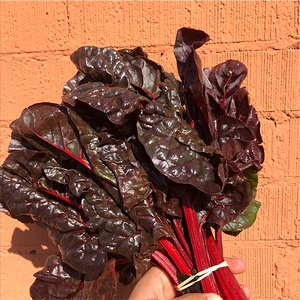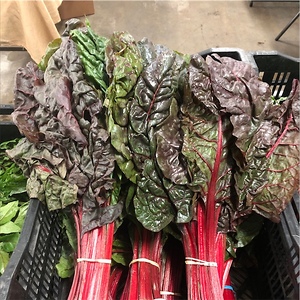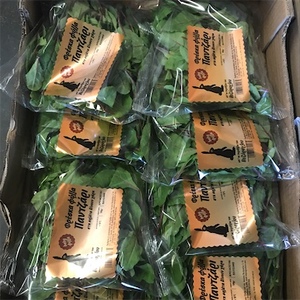

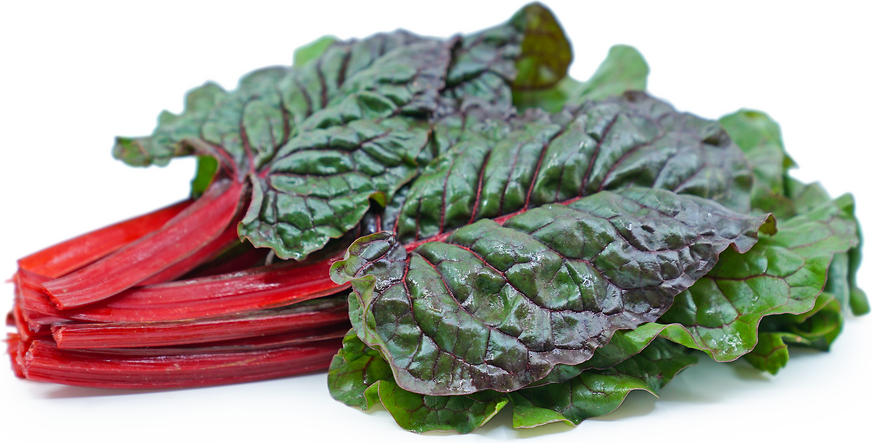
Red Swiss Chard
Estimated Inventory, 12 ct : 5.00
This item was last sold on : 04/18/25
Description/Taste
Red Swiss chard has broad, wavy and wrinkled bronzed green leaves with contrasting crimson red leaf stalks. The ruby red stalks extend into red veins throughout the plant's leaves. Red Swiss chard's flavor profile shares the earthiness of a beet green with the salinity of spinach. The red stalks are fibrous, often bitter and succulent, as they carry the bulk of the plant's water content. Both the leaves and the stalk are edible.
Seasons/Availability
Red Swiss chard is available year-round.
Current Facts
Red Swiss chard, botanical name Beta vulgaris subsp. cicla var. Flavescens, is the common name given to several Red Swiss chard varieties such as Magenta Sunset, Rhubarb and Vulcan. Betalain pigments are found in the stalks and leaves. These pigments are responsible for the plants vivid red colorings. They are also a vital utility for the plant's survival, attracting bees and insects for pollination while also providing natural UV protection. The plant also carries traces of geosmin, which is a volatile molecule displaying a wet-earth and woody aroma. That aroma can be assimilated on the palate, as volatile molecules set off the mouth's taste receptors.
Nutritional Value
Chard is known to be a nutritional powerhouse vegetable packed with vitamins, nutrients and health benefits. Red Swiss chard contains high levels of vitamins C, K, E, beta-carotene, calcium and the minerals manganese and zinc. As noted, it also contains betalain. Betalin pigments have repeatedly been shown to support activity within the body's detoxification process, activating and processing unwanted toxic substances. Betalians are not heat-stable, though, so longer cooking times can decrease their presence.
Applications
Most people do not associate Swiss chard varieties with Switzerland, regardless of the given name. As Red Swiss chard is native to the Mediterranean region, many recipes and applications are of Mediterranean influence. Red Swiss chard can be served raw or cooked. It can be sauteed, blanched, stewed, baked, even grilled. It can be added to salads, pastas, pizza, bruschetta, gratins and soups. The chard stalks are edible and add texture and flavor to the dishes they’re cooked into. Complimentary ingredient pairings include citrus, tomatoes, garlic, chickpeas, white beans, aged and melting cheeses, cream, mushrooms, bacon, fennel and herbs such as basil, tarragon and chervil.
Geography/History
As its genus, Beta vulgaris, suggests, chard is, in fact, a beet that has been chosen for leaf production at the expense of root formation. All chard varieties are descendents of the sea beet (B. maritima), a wild seashore plant found growing along the Mediterranean and Atlantic coasts of Europe and North Africa. Red Swiss chard varieties were already being cultivated as a leaf vegetable in Greece circa 400 B.C. Through mutation, varieties have been developed with widened leaf stalks, milder flavor, soil adaptability and disease resistance. Most Red Swiss chard varieties tolerate a wide range of soils and weather conditions with ease.
Featured Restaurants
Restaurants currently purchasing this product as an ingredient for their menu.
| Rancho Bernardo Inn (Avant) | San Diego CA | 858-675-8505 |
| Lodge at Torrey Pines Grill | San Diego CA | 858-453-4420 |
| Olive Tree Marketplace | San Diego CA | 619-224-0443 |
| Lodge at Torrey Pines Main | San Diego CA | 858-453-4420 |
| Hotel La Jolla - Sea & Sky | La Jolla CA | 858-459-0261 |
| The Kitchen at MCASD | La Jolla CA | 619-894-2051 |
| The Glen at Scripps Ranch | San Diego CA | 858-444-8500 |
| Mister A's | San Diego CA | 619-239-1377 |
| Trust Restaurant | San Diego CA | 609-780-7572 |
Recipe Ideas
Recipes that include Red Swiss Chard. One



